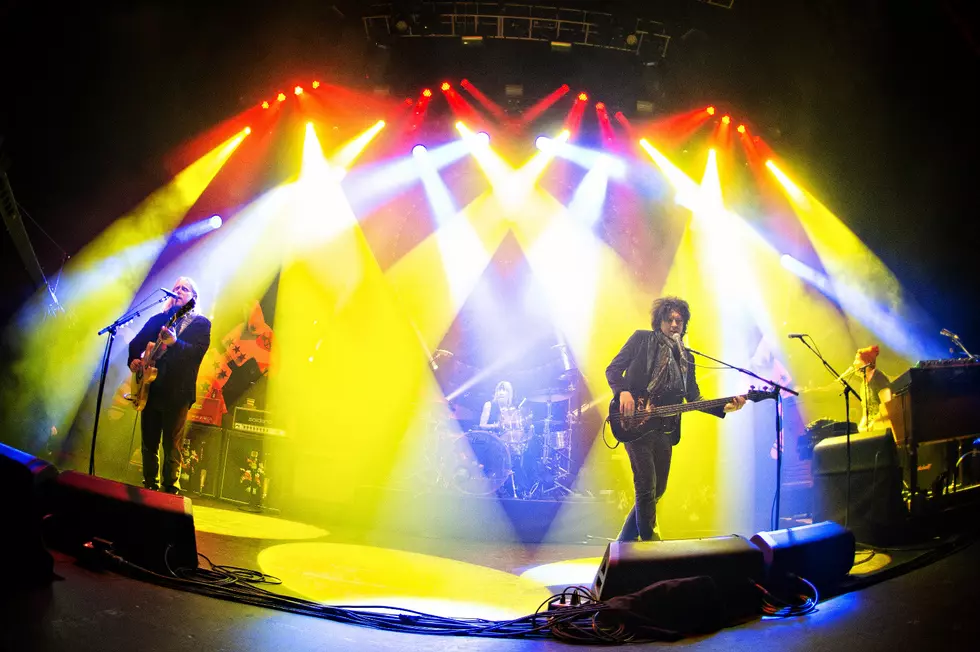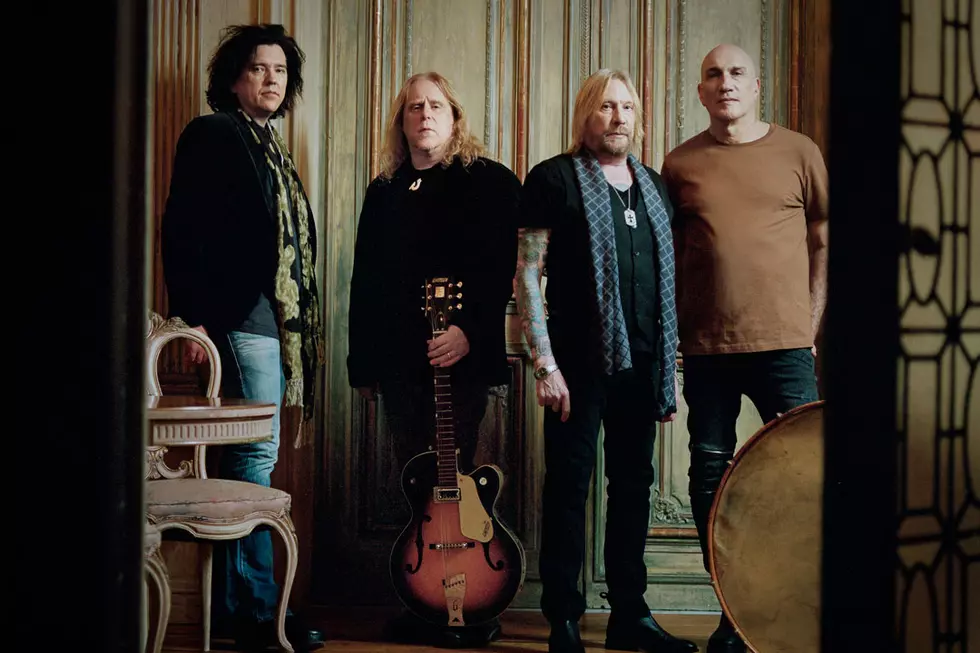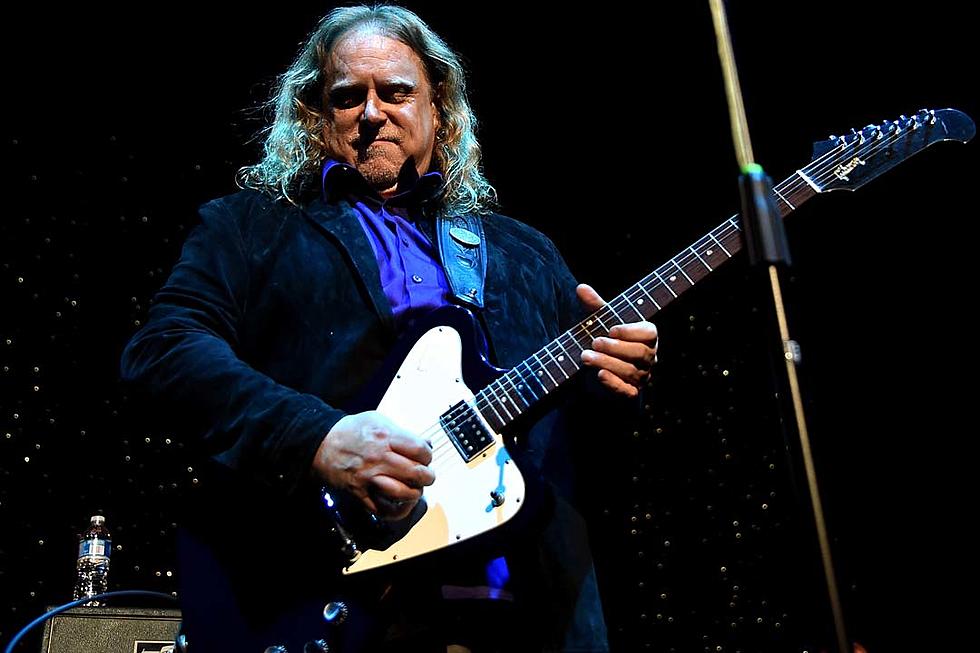
Warren Haynes Collects 25 Years of Gov’t Mule’s Best With New Live Album: Exclusive Interview
The recently released Bring on the Music live package pulls together more than five hours of music from Gov’t Mule, recorded across two nights at the Capitol Theatre in Port Chester, N.Y.
It’s an ample dosage that does a lot to illustrate the story of what the group has accomplished in its 25-year history. As guitarist and vocalist Warren Haynes shares, they put a lot of consideration into the songs that went into the setlist each night.
“We wanted to include some songs from every era of our career. Meaning, hopefully something from each studio record,” he explains in a conversation with UCR. “Also, we wanted to pull out some stuff that we hadn’t played in quite a while. We looked back at the previous live releases, especially the video releases, and wanted to make sure that a lot of the staples that we’ve done many times through the years, that if they appeared, they would appear in a different version. We didn’t want to just kind of do a similar version to any of the ones that we’d done on previous live releases. So those were the main three criteria, I believe, in our thought process.”
He says that it was a “refreshing” experience, noting that “we do that quite often just in general, when we’re not necessarily preparing for anything.”
“If we’ve given something a break for a while, we like to bring it back in and take a fresh approach to it, song by song. Some songs, like ‘Mr. Man’ and ‘Far Away,’ ‘Sin’s a Good Man’s Brother,’ ‘Life Before Insanity,’ some of these songs had not been played very much in quite some time. Even ‘Bring on the Music,’ we had not done very much. So it was important to include those songs, but also songs like ‘Blind Man in the Dark,’ that we’ve done many, many times. We were only going to include it if it took on some sort of fresh direction and approach, which it thankfully did.
One component of the Bring on the Music package is the two-hour concert film that was lensed by veteran photographer and director Danny Clinch, shot with nine cameras. The footage that Clinch captured has a cinematic feel in the way that it is presented, while also offering a fly on the wall perspective that feels reminiscent of classic concert films like The Last Waltz -- and that’s territory that Haynes himself knows quite well.
“Danny Clinch and I agree that’s one of the greatest rock films of all time and also one of our absolute personal favorites. I think having someone that we trust that we can allow to be as up close and personal and possible and not feel like we’re being compromised in a way that would lessen the quality of the show, Danny’s that guy,” Haynes says. “I’ve known Danny for almost 30 years. He photographed all of the early Gov’t Mule records. He did all of the photos for the early records, including the front cover of the mule, draped in the American flag, for our first album.”
Haynes adds that the fact that they’re good friends is “an added bonus” to what he believes is the most important thing. “Creatively, [he’s] the right guy for the job. I love all of his work and we’ve been talking about doing something like this for a long time,” he says. “This was the right time and we just kind of gave him carte blanche. Do what you need to do and we’ll do what it is that we do. At the end, we’ll hopefully be in good shape. It was a wonderful experience.”
Granted, Haynes and the members of Gov’t Mule are no strangers to being recorded. In addition to their extensive discography, the band has been offering up recordings of all of their concerts for a number of years via the Mule Tracks website. The tape is always rolling and there is rarely a moment on stage that isn’t documented.
Even still, he points out that when video is involved, it’s not easy to ignore the cameras that are right there in your face. But he also says that after the first few songs of the first night, they settled in and were able to forget about the camera crew. Most importantly, he was happy with the performances that they came away with.
“You know, our hope is that our bad nights are good and our good nights are great. But I’m particularly proud of these two shows. Especially in the way that everybody not only performed well under the duress of having the film crew there,” he says. “But that we were able to still take a lot of chances and not play it safe. Because that’s what we didn’t want to do was resort back to the way that the songs had been previously interpreted in the past. Especially the more open book songs, we want to take a moment by moment approach to them and I think we captured that part of the Gov’t Mule spirit.”
One moment that was captured for Bring on the Music was Gov’t Mule’s take on Pearl Jam’s “Come Back,” a deeper cut from the Seattle band’s catalog, plucked off of their 2006 self-titled album. In true Mule fashion, the group rehearsed the song on the afternoon of the second show, performing it for the first time later that same night.
“I wanted to do a cover that we’d never done before. Obviously, if we weren’t happy with it, we didn’t have to include it in the package. But it turned out good, so we decided to keep it. You know, it was very important for this release, for it to be mostly Gov’t Mule material, hardly any covers,” he explains. “I didn’t want to repeat any of the covers that we had put on previous live releases, so to speak.”
Besides “Come Back,” the other covers that did make it into the setlist were songs that have an established place in the group’s own catalog. “The ones that we utilized are ones that we’re known for that we’ve done some studio version of, like ‘Hammer & Nails’ and ‘Sin’s a Good Man’s Brother.’ But it was very important to get as much Mule material on there as possible and there’s a lot of material. Between the two nights, we played over six hours of actual music and I think there’s five and a half hours of music that we wound up keeping.”
As Bring on the Music reveals, Haynes and the members of Gov’t Mule have built quite an impressive legacy -- especially when you consider that the band first sprang to life as something that he thought would be little more than a “fun side project,” as he told us during a 2014 conversation. “We didn’t even have any designs on doing a second record or turning it into a touring band or any of the things that eventually happened,” he said at that time. “Maybe that’s why it worked, because we were just flying by the seat of our pants and taking it one step at a time.”
Top 25 Southern Rock Albums
You Think You Know Lynyrd Skynyrd?
More From 99.1 The Whale










